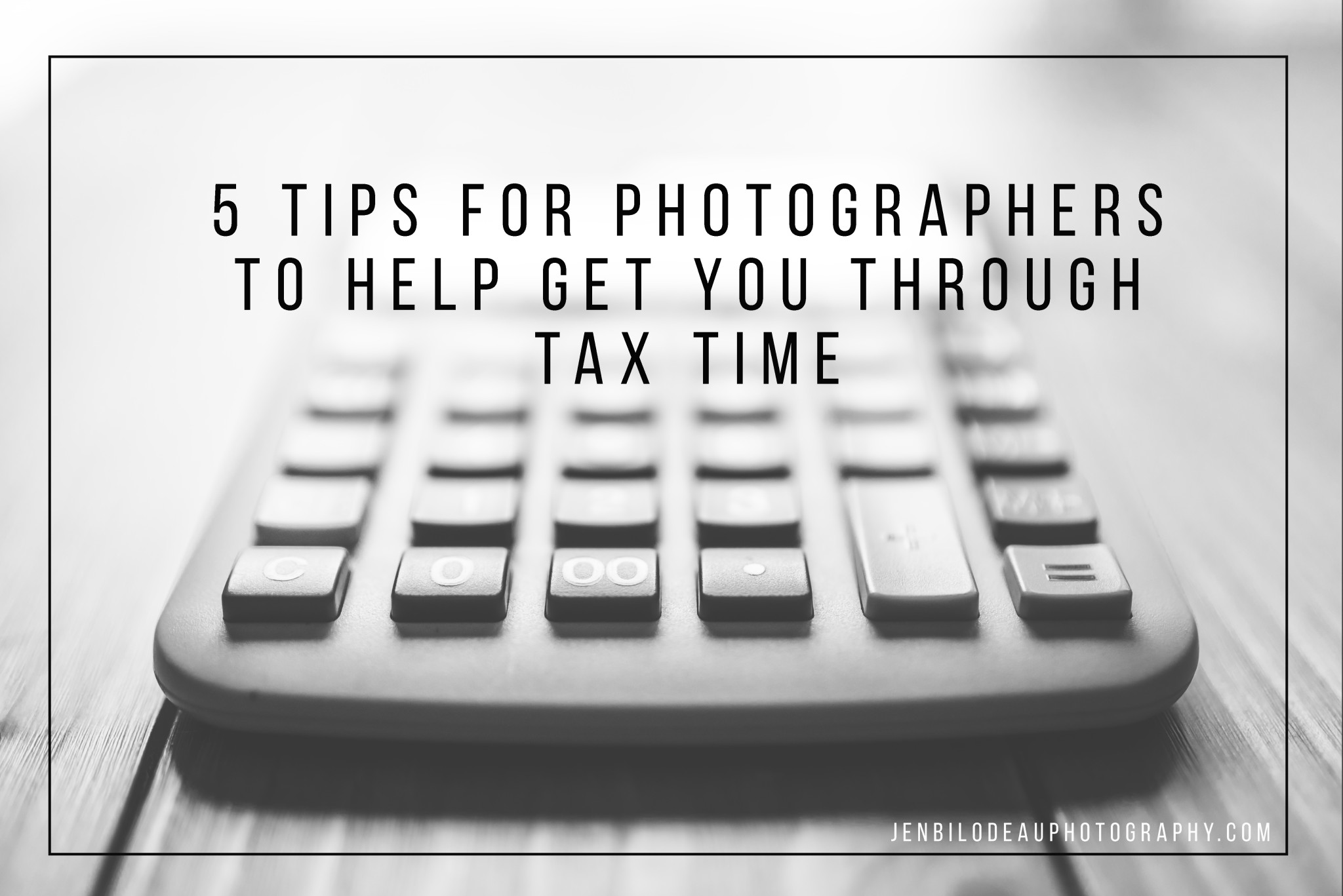
Tax time can be intimidating for the small business owner. You want to be sure you are following complex regulations properly, all while minimizing your tax burden as much as possible. When people approach me with tax questions, they usually fall into one of the 5 buckets listed below. Read on to learn a little bit more about each of these topics as they relate to photographers and hopefully breathe a little bit easier come tax time.
1. Commonly Deductible Expenses & Organization
As a business owner you can deduct the expenses you incur in the operation of your business against the income that you earn. The most important thing to remember when taking these deductions is keeping your records organized. It’s helpful to sort receipts in folders by month and check them off when they are entered into your bookkeeping system. Whether you use a formal system like 17 Hats, an Excel workbook or simply a notebook, keeping your records neat and organized will make tax time so much less of a headache. Below is a list of some commonly deductible expenses for photographers.
- Web hosting fees, domain name registration, etc
- Photography seminars and workshops
- Your mileage to a photography session or your mileage to pick up supplies
- Accountant and Attorney fees
- Insurance for your business
- Session location fees
- Subscriptions
- Advertising Expenses
- Contracted Labor (second shooters, assistants)
- Camera, computer and repairs
- Supplies
- Gift expenses as long as it’s not more than $25/client
- Depreciation (equipment is usually over 5 years unless you elect the Section 179 deduction)
2. The Section 179 Deduction
All of the assets that you purchase for your business (camera gear, computers, etc) are depreciated against the business. This means that you don’t take the full expense in the year you purchase it, but instead allocate a portion across several years (usually 5 for computers, cameras and other small equipment). Many small business owners elect to take a “section 179 deduction” that allows you to deduct the full cost of depreciable property in the year you buy it. It’s an incentive created by the U.S. government to encourage businesses to buy equipment and invest in themselves. This may be helpful if you are just starting out so that you can purchase needed equipment and lessen your tax burden – a smaller tax bill means more cash in your pocket today.
3. The Home Office Deduction
Many photographers work out of their homes which may entitle you to a home office deduction. The home office deduction is designed to account for expenses such as mortgage interest, insurance, utilities, repairs, and depreciation, as they relate to your business. You can account for the home office deduction using either the Simplified method (using a flat dollar value per square foot) or the Regular (actual expenses adjusted for the percentage of your home used for business). With either method, to claim a home office deduction you must be able to show the following:
- Regular and Exclusive Use: You must regularly use part of your home exclusively for conducting business. A multi-use office/homework space does not qualify. It must generally be in a separate room or group of rooms, where the division is clear and you can show that personal activities are excluded from the business section.
- Principal Place Of Business: You must show that you use your home as your principal place of business. It is still ok to conduct business outside of your home office (such as at a coffee shop, session location, etc), as long as your home office is the primary place you conduct your business (such as for administration or management activities).
Generally, deductions for a home office are based on the percentage of your home devoted to business use. Claiming a home office deduction increases your chance of audit from 1% to 5%. Make sure if you take this deduction that your records are tight and accurate.
4. Travel & Meals Expense
The federal government allows you to deduct meals that are considered “ordinary and necessary” to your business. An example would be meeting a client for coffee to talk about their upcoming session. On the other hand, grabbing a sandwich on your way home from a late photo shoot does not qualify as it does not meet the “ordinary and necessary” for your business test.
When trying to determine if a meal is deductible it must pass the “Directly Related Test”. You will want to ask yourself: Did you engage in business during the meal? Did you have more than a general expectation of getting some sort of business benefit out of the meeting?
5. Childcare Expenses
Childcare expenses incurred so that you can work are deductible. If you send your child to a formal daycare facility, they will provide you with a form that you will use as a receipt to claim the expense. If you bring someone to your home to watch your children while your edit or go out on a photoshoot, things get a little more complicated.
Most babysitters are paid in cash and do not report this money as income on their tax return. For you to be able to claim the money you pay to your sitter as a deductible expense, you will have to formalize your payment arrangement with your sitter, which results in any payments to your child care provider being reported as their taxable income. If you would like to claim and deduct your in-home childcare, you have to go through the formal process of hiring a Household Employee (which means tax forms and filings – I strongly suggest you work with an accountant on this).
If you would like to learn more about taxes or general business issues, my next run of Business From The Ground Up begins April 3rd! Click HERE for more information!

0 Comments